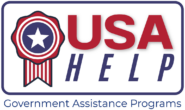Assistance For Families
In the United States there exists several schemes to assist households grappling with issues such as financial hardship, food shortage, homelessnes, health care and education. These schemes are tailored towards aiding needy households and provide access to key services and resources.
What Is Assistance for Families?
Help for needy families is a diverse range of government funded initiatives aimed towards the more basic needs of less fortunate families. These programs give financial aid, food support, subsidized housing, medical attention, and education. The purpose of these programs is poverty alleviation and promote self-dependency among the people.
These programs or schemes are mostly initiated by the federal state and local governments, implemented through collaboration with community based organizations, NGO’S and private sectors. Important points are:
1. Funding And Management: SNAP (supplemental nutrition assistance program) and TANF (temporary assistance for needy families) are examples of federally funded programs that are administered on a state level.
2. Evaluation of Eligibility: In order to qualify, families need to meet a number of income and other criteria.
3. Distribution of Resources: Assistance can be given in the form of direct payment, subsidization, vouchers, or service provision.
Through coordinated approach of different governmental agencies, these programs are targeted towards low income families.
Who Can Access These Programs?
Programs have different applicabililty which means that following groups may qualify for them:
– Low-income families: Who fall below federally defined poverty thresholds.
– Single parents: With dependent children below certain age.
– Immigrant families: Subject to immigration status and program criteria.
– Persons with disabilities and their families.
– Older persons who care for dependants.
Specific indicators of a household’s socio-economic standing such as income, family size, and place of residence are necessary for eligibility. A subset of programs consider other indicators such as employment status or disability.
Objectives of Family Assistance Programs
The primary objectives of these programs are:
– Reduce poverty: Alleviating economic hardships for families.
– Promote health and well-being: Ensuring access to nutritious food, healthcare, and safe housing.
– Encourage self-sufficiency: Supporting education, job training, and employment.
– Enhance child development: Providing resources for early childhood education and care.
Benefits of Assistance for Families
The benefits extend beyond immediate relief, offering families long-term stability. Key advantages include:
– Financial security: Direct cash payments and subsidies reduce economic strain.
– Improved nutrition: Programs like SNAP ensure families can afford healthy meals.
– Affordable housing: Vouchers and subsidies provide access to safe living conditions.
– Healthcare coverage: Medicaid and CHIP offer vital health services for children and adults.
– Educational opportunities: Scholarships and grants open doors to higher education and skill development.
Key Family Assistance Programs
Here are some of the most significant programs available in the USA:
Medicaid: Affordable Health and Medical Insurance
In the U. S, Medicaid is…
Deferred Action for Childhood Arrivals (DACA)
DACA aka Deferred Action for Childhood…
Unemployment Insurance
A Comprehensive Overview Unemployment Insurance (UI)…
Emergency Rental Assistance Program
The cost of housing in the…
Social Security in the USA
Social Security is an important government…
Section 8 Housing Program
The Section 8 housing program works…
Social Impact of the Family Assistance Programs
Family assistance programs tend to have wider impact in mitigating poverty and enhancing social outcomes. They booster by:
– Support economic stability: Helping families not lose houses and remain food deficient.
– Improve health outcomes: Providing access to healthcare services and a balanced diet.
– Foster education: Early childhood programmes are set up to prepare kids for schooling.
– Strengthen communities: Mitigating inequalities and promoting diversity.
Support programs for families in the USA serve a critical function in attending to economic difficulties, fostering health, and achieving self-sufficiency. Knowing how these programs work and how to benefit from them arms families with resources crucial for a bright future. From federal programs like SNAP and Medicaid to community aid, these programs provide a safety net that allows families to move up the ‘success ladder’.






